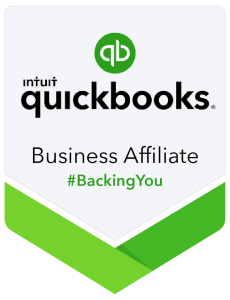Understanding accounting vocabulary is an important first step in learning how accounting works so let’s look at some key terms and their meanings. The Journal, sometimes called the Book of Original Entry or more commonly the General Journal, is how transactions are entered into accounting records. It is a chronological list of the company’s transactions. An account is a basic summary device used in accounting. All of the related transactions to a particular account are recorded in that account.
For example, all the transactions affecting cash would be recorded in the cash account. Accounts are grouped into 5 broad categories which include assets, liabilities, equity, revenues, and expenses. We will learn how Financial Data moves from the journal into the account later. In an academic setting, the account is often expressed as a T-Account. Two additional terms that are very important in accounting are debit and credit.
Debit, sometimes abbreviated DR, means the left side of an account, and credit, which is sometimes abbreviated CR, means the right side of an account and that’s it. Debits and credits are how different accounts are increased or decreased but they don’t mean increase or decrease because it depends on which account the effect.
Each transaction must affect two or more accounts to keep the accounting equation balanced. We learned this when we learned about the accounting equation. This is known as double-entry accounting.
So every transaction must include at least two accounts. One account is dead and one account is credited. There can be more than two accounts but there can never be less and debits must always equal credits or the accounting equation would be out of balance.
Account balances are either debit balances or credit balances. There are no negative balances in accounting.
Balances are calculated by totaling the debit side of an account and totaling the credit side of the account. Then we subtract the smaller side from the larger. This is the balance on the larger side. An account can only have one balance. In this example, debits are 20,000 and credits are 9000.
So the balance in this account is a $11,000 debit balance. In this next example, debits are 15,000 and credits are 17,000.

So the balance of this account is a $2000 credit balance. The ledger sometimes known as the general ledger is a collection of all the company’s accounts. So all of the asset, liability, equity, revenue, and expense accounts are located in the ledger.
Before we end this short video on accounting terms, I would like to revisit some terms and define the accounts a little better. Assets are economic resources, which means they are something of value, that are owned or controlled by a business and will provide benefits in the future. The key when trying to determine if something is an asset is that assets will provide future benefits.
Supplies are an asset because we haven’t used them yet. When we do they will become an expense – supplies expense to be exact.
And they will become a past benefit, not a future benefit anymore. Accounts receivable is for money that is owed to us from our customers. If we perform service on account, we will use accounts receivable in recording that transaction. Prepaid expenses are like supplies, they will become a past benefit, but until they do they are an asset. Liabilities are claims on our assets from external parties like creditors.
Accounts payable is for money that we owe to our vendors or suppliers. Accrued liabilities, sometimes called accrued expenses, are amounts that we owe for our bills related to our operations. For example, utility bills received but not paid is a type of accrued liability. Equity is the claim on assets from internal parties like owners. It is sometimes called net worth or net assets because it’s the value of the assets that remain after our liabilities are paid off or settled.
You can see the accounting equation can be manipulated to be assets minus liabilities equals equity, net worth, or net assets.
Retained earnings of the amount of earnings the company has retained rather than paid out to stockholders in the form of dividends. Dividends are the amount of earnings the company has paid out to the stockholders as a return on investment. Revenues are inflows from operations. They are the benefits a company receives from its business operations.
Recall that they increase equity, but are not technically equity accounts. Service revenue is earned by performing service. Sales revenue is earned by selling goods. Expenses are outflows from operations. They are the costs companies incur from their business operations.
The account costs of goods sold are not obvious that it is an expense account. For retailers and manufacturers, it is often their largest expense. It is titled exactly what it means. It is the cost of the goods sold. And that concludes this short video introducing some foundational accounting terms and a more in-depth look at some specific accounts.
Need QuickBooks? Get your copy here.




